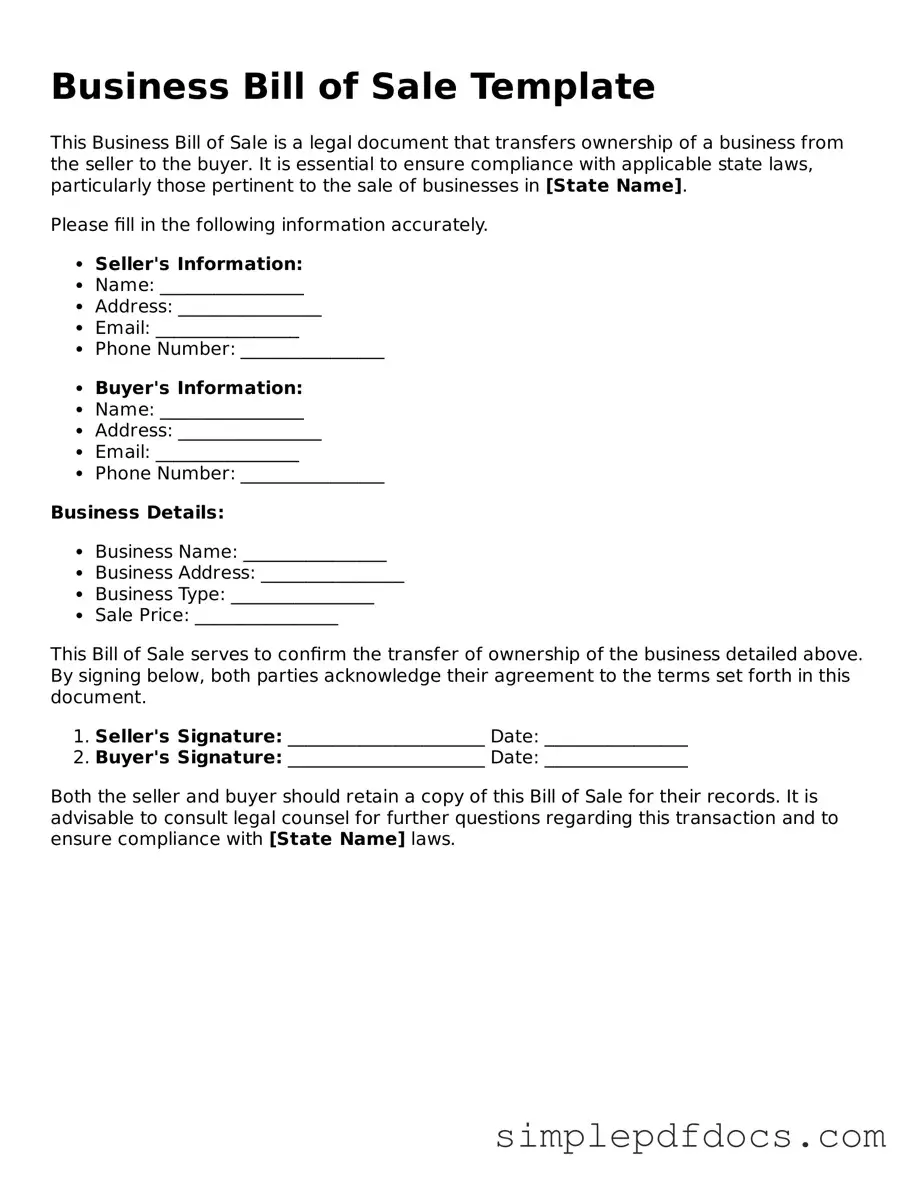The Business Bill of Sale form serves as a critical document in the transfer of ownership of a business or its assets from one party to another. This form not only delineates the specifics of the transaction but also provides legal protection for both the seller and the buyer. Key elements typically included in the form are the names and contact information of the parties involved, a detailed description of the assets being sold, and the purchase price agreed upon. Additionally, the form may outline any warranties or representations made by the seller regarding the condition of the assets. By documenting the transaction in writing, the Business Bill of Sale helps to clarify the terms of the sale, ensuring that both parties have a mutual understanding of their rights and obligations. Furthermore, it may also include provisions related to liabilities, taxes, and any contingencies that must be met prior to the completion of the sale. In essence, this form is an essential tool that facilitates a smooth transition of ownership while safeguarding the interests of both parties involved.
